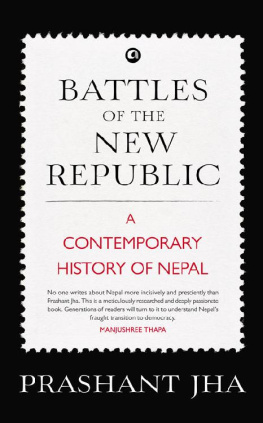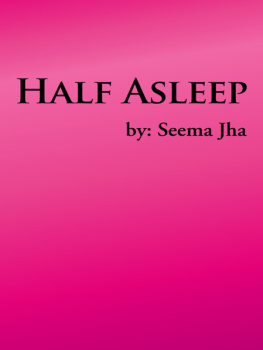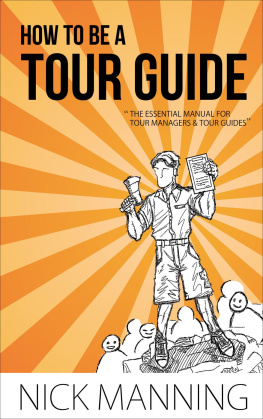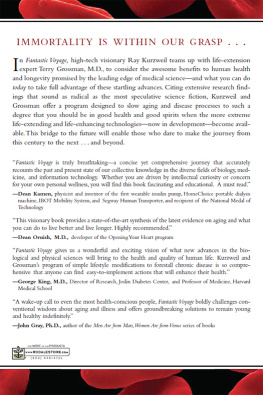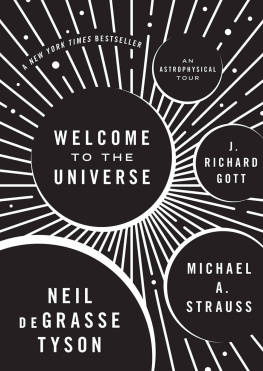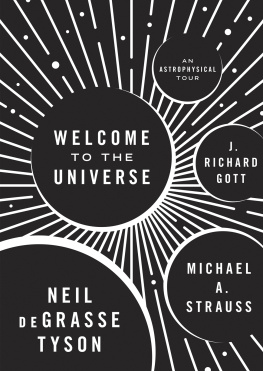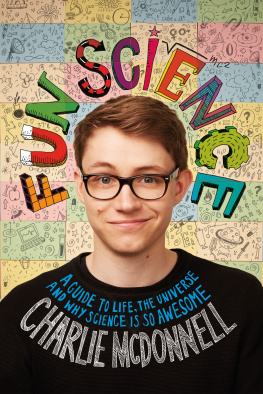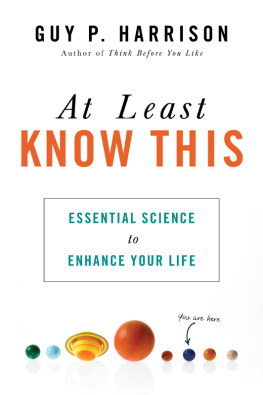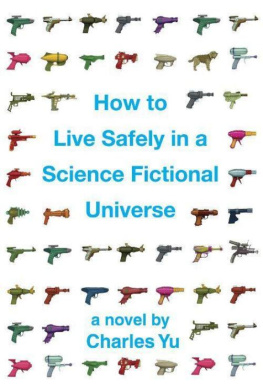Alok Jha is science and environment correspondent at the Guardian. In addition to writing news and comment, he presents the Science Weekly podcast and runs the Guardians science website. He graduated with a physics degree from Imperial College London.
Jhas clear writing style organises these big ideas in a way that makes them a pleasure to revisit, and an eye-opener if youre discovering them for the first time. If you know someone who hasnt thought about science since leaving school, youd do well to recommend this book to them. Dallas Campbell, BBC Focus
HOW TO LIVE FOREVER
And 34 Other Really Interesting Uses of SCIENCE
ALOK JHA


New York London
2011 by Alok Jha
All rights reserved. No part of this book may be reproduced in any form or by any electronic or mechanical means, including information storage and retrieval systems, without permission in writing from the publisher, except by reviewers, who may quote brief passages in a review. Scanning, uploading, and electronic distribution of this book or the facilitation of the same without the permission of the publisher is prohibited.
Please purchase only authorized electronic editions, and do not participate in or encourage electronic piracy of copyrighted materials. Your support of the authors rights is appreciated.
Any member of educational institutions wishing to photocopy part or all of the work for classroom use or anthology should send inquiries to Permissions c/o Quercus Publishing Inc., 31 West 57th Street, 6th Floor, New York, NY 10019, or to .
ISBN 978-1-62365-247-0
Distributed in the United States and Canada by Random House Publisher Services
c/o Random House, 1745 Broadway
New York, NY 10019
www.quercus.com
CONTENTS
INTRODUCTION
How do you work out the pressure of a gas on the side of a container? First, imagine a single molecule of gas flying around a container and calculate how hard it hits the surfaces. Scale that model up to work out the combined force per unit area, or pressure, of a system of trillions and trillions of molecules. Its so simple 15-year-olds could do it. Dont believe me? Well, I was one of them.
On a winter morning 18 years ago, I finally understood what science was. Until then, it had been a black box of complex laws and descriptions of how things worked. I was convinced the laws of nature were dug out of the ground like mud-encrusted fossils. (I never worked out how. Did they go on digs like archaeologists? If so, where?) And they had all been found anyway. There was no more work to do, just a list of things to learn so that I could pass some exams.
It wasnt that I had no interest in the world around me. I read books about how stars were formed, made newspapers burn with lenses, collected insects and tried mixing household chemicals, like any child might. But in my mind, none of that curiosity related to what was going on at school. Every physics, biology and chemistry lesson was simply a case of watching another equation, law or definition drop out of a black box.
Salvation for me came from my high school physics teacher. He would plow through the minutiae of the syllabus, but he also taught us what science actually is. Often, he would just set a problemwork out how hot the surface of the Sun is, given the temperature of Earths atmosphere, sayand then walk out of the classroom, asking one of us to find him when someone had worked it out. He indulged our curiosity. A classmate was convinced, for example, that crushing a Polo mint gave out a faint blue light, so our teacher gathered us in the photography clubs darkroom to see if it was true. We didnt prove it that day but it stoked our curiosity for strange questions, which he would patiently answer.
In those two years, we were asked to do what Robert Boyle, Joseph Gay-Lussac and Jacques Charles did from first principles nearly 200 years earlierwork out how pressure, temperature and volume were related. We even had a go at working out how Albert Einstein came up with the idea of the photoelectric effect, which marked the birth of quantum theory. And the thing was, we could do it. These giants of science, immortalized in the names given to physical constants and the laws of nature, had spent decades arriving at their answers. But we could follow their logic. Even better, working out those equations or the answers to apparent conundrums gave a sense of ownership. The black box was beginning to crack open and the decisive move had been made by my own imagination.
Science is all about solving problems and, in many cases, those problems revolve around framing the right question to ask. Perhaps you want to know why nuclear bombs are so powerful or what happened in the second after the Big Bang. Maybe youve spent a night or two looking up at the heavens and wondering if there is life out there, or just been curious about how electricity gets into the plug sockets at home. Or you want to know whether or not to worry about the greenhouse effect or how the rich diversity of life has evolved on Earth over its 4.5 billion year history. Maybe you want to know how we found out that Earth is 4.5 billion years old?
These questions (and so many more) have all been answered by one of the most remarkable, creative and collective efforts in the history of humanity. Science has given us the tools to unlock some of the most profound mysteries of the Universe.
I was enraptured by science at age 15 because I remember thinking that there had to be more to the numbers and rules. But plenty of others probably leave behind what they think is a boring and difficult subject at school, forever more carrying an impression that its reserved for the nerdy. For anyone who still harbors such thoughts, I hope that you will find in this book a glimpse into what science really is: the remarkable story of the human imagination.
CHAPTER 1
How to clone a sheep
It starts with a cell
The difficult biology of cloning
After Dolly
Clones to the rescue
In 1997, a very ordinary black-faced mountain sheep gave birth to a very extraordinary lamb. Improbably for a lamb, her arrival generated tens of thousands of words in newspapers, grabbed the gaze of scientists from around the world and induced a bout of soul-searching that still continues today. The birth of Dolly the sheep kick-started a new era of science and, along with it, a whole new set of moral questions for society to grapple with. The reason? Dolly had been cloned from another adult sheep.
It starts with a cell
On paper, cloning is simple. Take a cell from the individual you want to clone and extract the DNA. Put that material into an unfertilized egg, which has had its own DNA removed. Trick this composite egg into dividing, usually with a jolt of electricity, and let it grow in the lab for a few hours or days. If that works, transfer the dividing embryo into a surrogate womb and keep your fingers crossed that the embryo becomes a baby.
In real life the process of somatic cell nuclear transfer (SCNT), as the standard cloning technique is known, is a lot harder than it sounds. The scientists at the Roslin Institute in Edinburgh, who created Dolly the sheep, and colleagues in molecular biology laboratories around the world, had been working for decades to understand the SCNT technique before their 1997 success. They carefully watched everything from frogs to mice, prodding and teasing apart embryo cells at various stages to work out how a single cell manages to grow into a complete organism.
Next page

